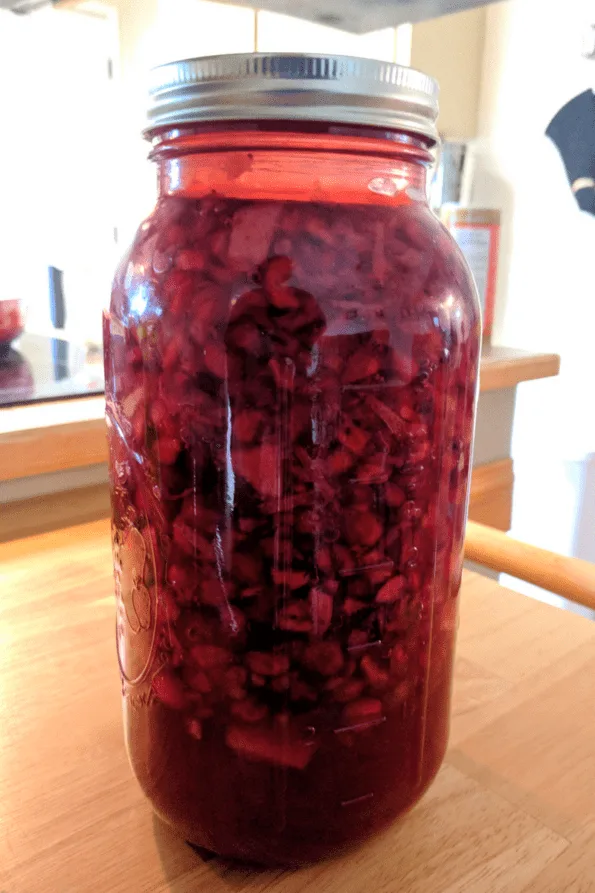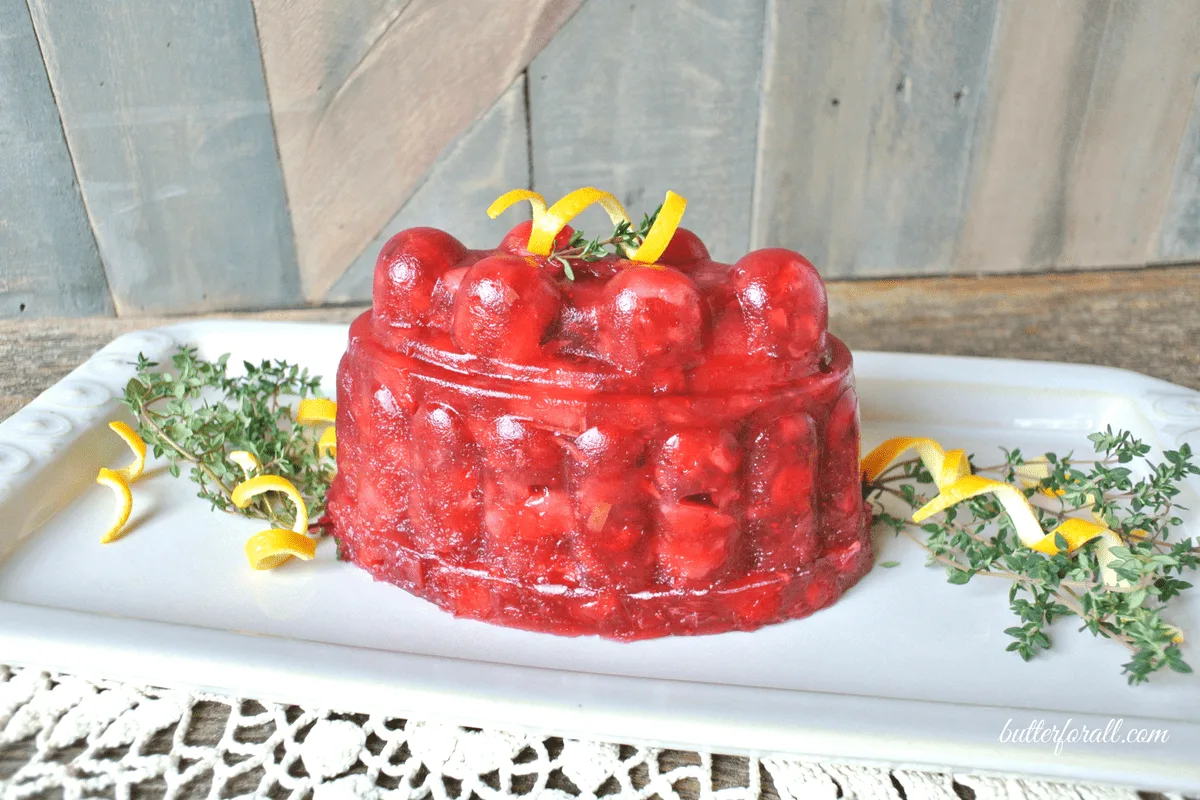Whether you call it cranberry sauce, jellied cranberry, or cranberry salad, no holiday meal is complete without the sweet-tart taste of cranberries!
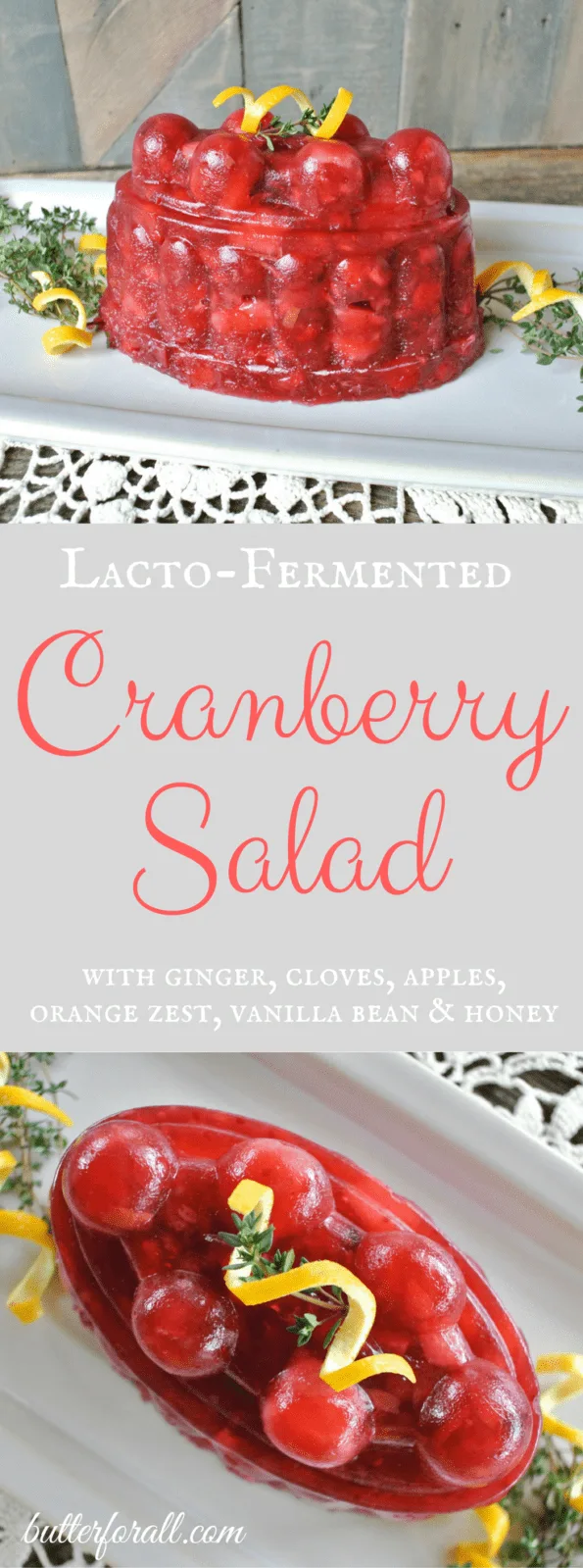
I took my cranberry sauce in a whole new direction this year when I started reading about fermented cranberries. Like peeled whole garlic, whole cranberries can be covered in raw honey and left to ferment for up to 1 year! That got my creative juices flowing and I came up with a recipe that uses a honey brine instead of straight honey. I was interested in a quicker ferment that would give me a less sugary, pleasantly sweet result. So in the true nature of creativity I winged it and came up with a completely original recipe.
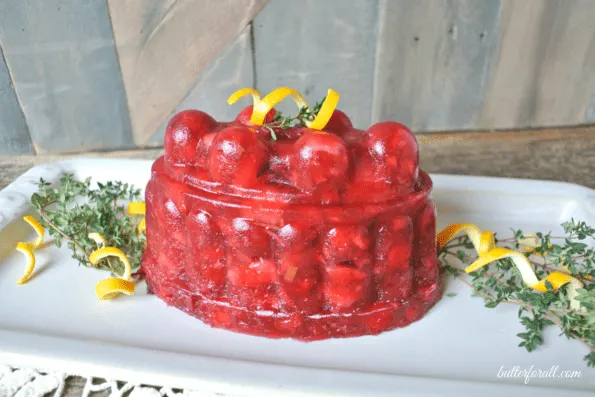
Lacto-Fermented = Probiotics
Lactic acid is the compound produced when Lactobacilli bacteria start to break down sugars and starches. This lactic acid acts as a preservative for fruits and vegetables while increasing available vitamins and minerals, easing digestibility, and promoting healthy intestinal flora.
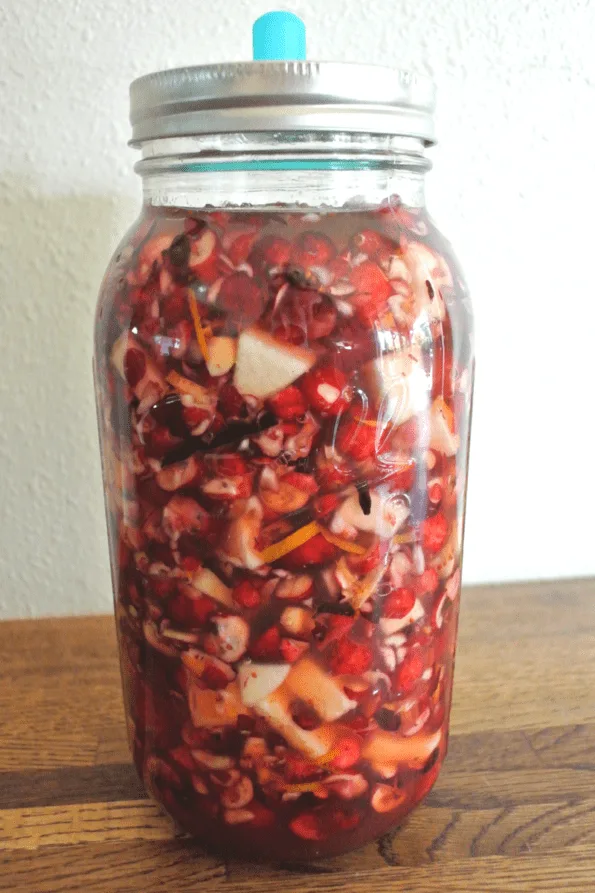
Fermenting Is a Creative Outlet and It’s Not Hard to Master
You just need the proper tools and a bit of knowledge about how it all works.
First, you will want to know the basics. Get yourself a good reference book like this:
Having a book for reference on hand will help you answer quick questions as they arise.
Second, you want to collect the proper tools: clean jars, weights, and vents to keep your ferment happy and safe.
Third, fermenting doesn’t happen overnight! Make sure you plan ahead and allow plenty of time for ferments to mature.
And last, you just need to try some ferments to see what you like. Click here to find all my fermented recipes!
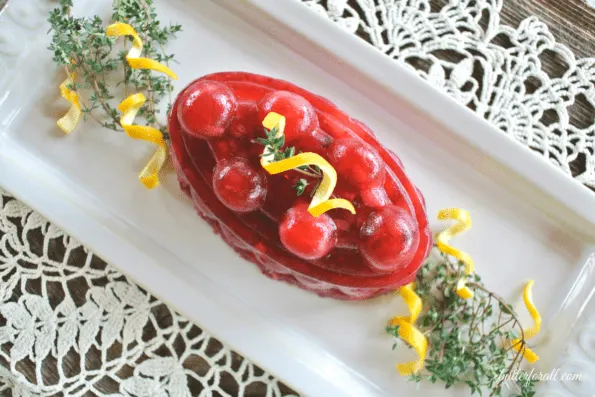
A Note on Using Whey as an Inoculant
Whey from fermented/cultured dairy products is already full of lactic acid bacteria and lactic acid. This will kick start your fermentation and keep out the bad bacteria and mold that can ruin your ferment. Typically in fruit ferments no salt is added as an inhibitor, so it is especially critical to use whey as an inoculant.
To learn how to collect whey from yogurt or other cultured dairy products click here.
Preparing the Lacto-Fermented Cranberries
Fermenting time is 9 to 14 days. These amounts will yield 8 cups of cranberry salad.
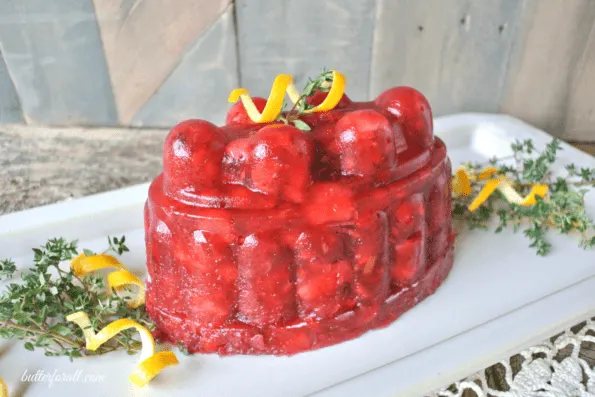
Wash your cranberries in cold filtered water and allow them to air dry slightly.
Meanwhile, working into a large bowl, peel and dice the apples, zest the orange, and chop the ginger. Add the cloves, the split vanilla bean, and the honey. Stir this mixture well.
I used my food processor for the next step but a sharp knife and a little patience will work also. Pulse or cut the cranberries into halves or quarters. A few pulses in the food processor was sufficient in my case. This left a few cranberries whole but most were slightly chopped.
Add the cranberries to the bowl and mix them thoroughly. Pack the cranberries into a half-gallon jar or split them between two quart jars.
Add the whey to the jar or jars and cover the cranberries with filtered water. You want the jar to be filled to the neck but no higher.
Add a clean weight, vent, and ring lid. Make sure all the ingredients are completely submerged in the brine. Spoon off any floaters (pieces of cranberry or spice) that make it up above the weight.
Leave the jar at room temperature for 9 to 14 days. During this time you will see the cranberries start to ferment and release tiny bubbles of carbon dioxide. Over the course of the ferment the texture of the fruit will change and take on a more cooked appearance, although the flavor will stay bright and fresh and the cranberries will still have a nice crunch. Start tasting your cranberries after 8 to 9 days. Mine were done in 9 days because my kitchen is fairly warm with the amount of cooking I do.
- Day 1
- Day 9
Storing Lacto-Fermented Cranberries
Once fermentation is complete you can remove the weight and vent and add a lid and ring. Store the cranberries in the refrigerator for up to 6 months.
Making the Lacto-Fermented Cranberry Salad
To make the cranberry salad you will first want to remove the cloves and vanilla bean. Empty the cranberries into a shallow baking dish and use a spoon to retrieve the spices.
I used gelatin to set my salad and the instructions for that follow. If you are vegan or vegetarian a good alternative would be to use agar powder or to simply strain some of the liquid off and puree the fruit without a binder.
For every pint of cranberries in brine that you wish to set into a salad, use 1 tablespoon gelatin and 1 tablespoon water. I set up the whole half gallon in glass molds and jars to be used as a condiment for Thanksgiving and beyond.
In a small sauce pan stir the gelatin and room temperature filtered water together to form a paste. Set the pan on a burner over low heat and stir the gelatin while melting. Once the gelatin is liquid allow it to cool slightly then add it to the shallow baking dish of cranberries and brine. Refrigerate the cranberries for about 30 minutes, stirring occasionally. This will begin to set the salad, helping to keep the cranberries suspended in the brine. Once the cranberries have started to thicken you can pour them into molds or jars for presentation. Refrigerate the salad until completely set.
Un-Molding the Cranberry Salad
Over your serving dish, use a small sharp knife and run it around the inside edge of the jello mold. Once the air lock is broken the salad should release from the sides of the mold.
Serve the salad with your holiday meal, on a cheese plate, or as a condiment with sourdough buns and butter.
Recipe yields 8 cups of fermented cranberry salad. Fermenting time 9 to 14 days. A note on using whey as an inoculant. Whey from fermented/cultured dairy products is already full of lactic acid bacteria and lactic acid. This will kick start your fermentation and keep out the bad bacteria and mold that can ruin your ferment. Typically in fruit ferments no salt is added as an inhibiter so it is especially critical to use whey as an inoculant. To learn how to collect whey from yogurt or other cultured dairy products, click here.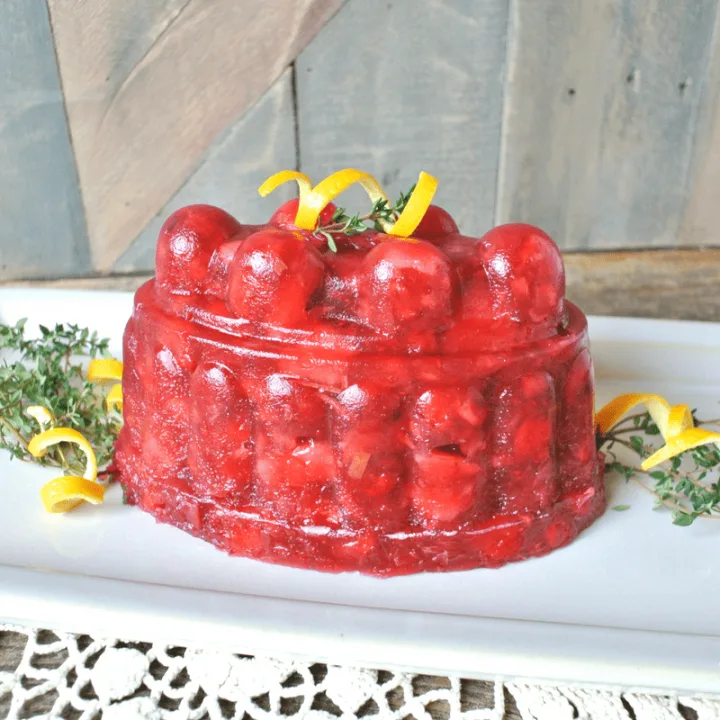
Lacto-Fermented Cranberry Salad – A Nourishing Holiday Tradition
Ingredients
After the ferment has finished:
Instructions
Storing Your Lacto-Fermented Cranberries:
Making the Lacto-Fermented Cranberry Salad:
Un-Molding the Cranberry Salad:
Notes


